What Is Geothermal Heating? And Its Advantages And Disadvantages

If you have been following our previous articles, you should know that we are covering lots of home heating systems. Geothermal heating is one of the systems that should not miss our attention.
Yes, it does sound like this heating system is connected to heat below the earth (i.e. volcano). In reality, the system is very efficient, available and comes with a low-emission heat source.
But how does geothermal heating work? Are they perfect for your home? If you have all of these questions, then I suggest going through this article. Here, I have listed all you need to know about geothermal heating systems.
What Is Geothermal Heating?
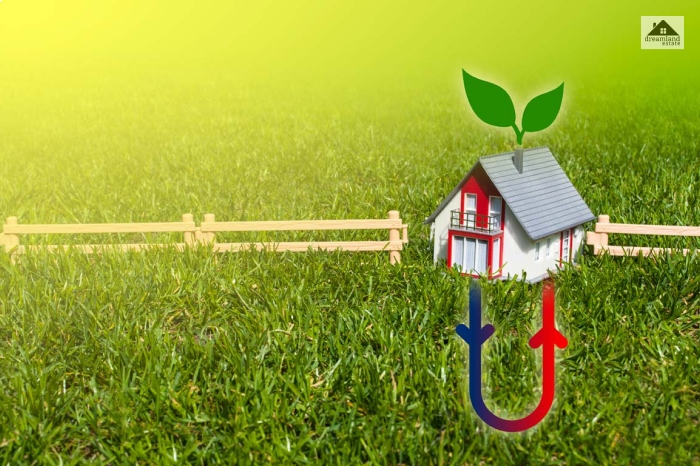
The geothermal heat pump (GHP) is the main part of the geothermal heating system. These pumps help harness the temperature from a foot under the earth’s surface. The GHPs help transform the heat into warm air and use for heating rooms.
The GHPs are also known as the earth-coupled, GeoExchange, water source heat pumps. The most attractive aspect of these heating systems is that they do not require lots of electricity. According to many users and experts, they are the most efficient way to heat or cool down the rooms.
With these new and more efficient technologies coming in, air conditioners seem a little outdated. The geothermal heating system easily replaces more expensive variants of heating systems. It also takes away their cons like polluting gas furnaces, inefficiency and more.
Read More: Wood Burning Stove : Origin, Uses And Maintenance
Types of Geothermal Heating Systems
Many varieties exist in terms of how geothermal heating systems are set up. The complexity and variety of loops are the key determining factors for their varieties.
Closed-Looped System

The closed-loop system comprises a series of underground pipes with a liquid solution inside that absorbs and transmits the underground heat to the heating pump above. This system can be set up both horizontally and vertically.
Vertical
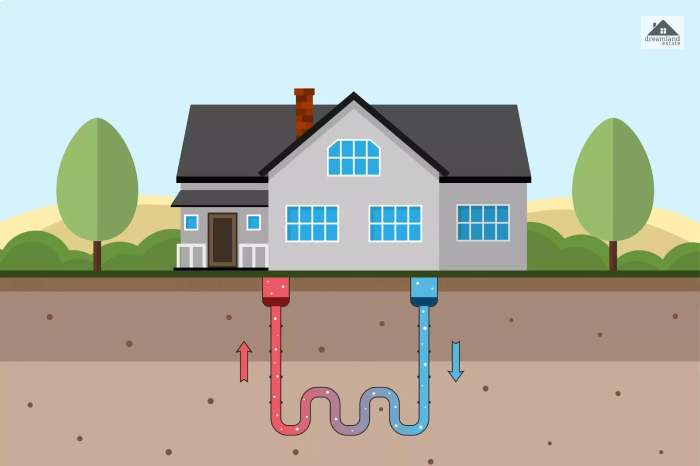
The most common method for installing geothermal heating systems is the vertical system. In this installation process, the pipes are installed vertically underground. This process requires least outdoor space. Drills are used to make holes and install the pipes vertically underground.
Horizontal
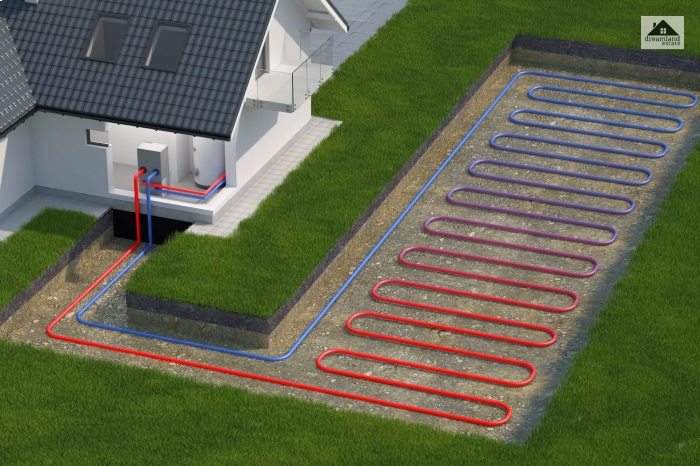
The closed-loop pipes are installed horizontally in the yard to absorb the underground heat for the heat pump. Since the backhoes can be used instead of drilling rigs, this process can potentially reduce the front-end cost for installation.
Open Loop System
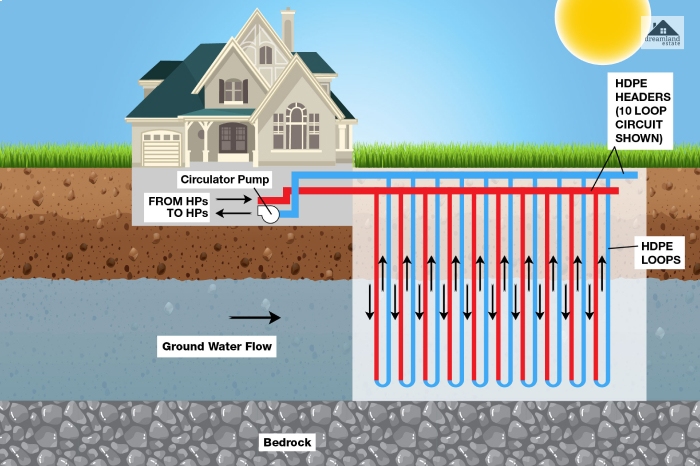
The open loop system is all about using groundwater as the system’s heat source. There is no closed loop of pipes circulating liquid underground in this system. Instead, there is an open loop for pumping the groundwater to the heat pumps directly. This way, the heat pump can collect the underground temperature.
Pond/Lake Heating System

The pond or lake geothermal heating process relies on the pond or the lakes as the source of geothermal energy. In reality, this is just another variation of the open-loop heating system.
How Does Geothermal Heating Work?
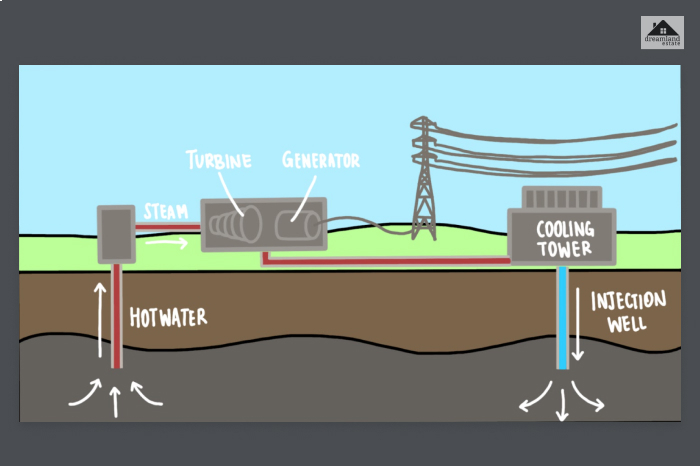
To understand the geothermal heating system, you need to know what the Geothermal Heat Pumps are and how they work. Here are the different components of the GHP –
Heat Absorption Through An Underground Heat Collector

The geothermal heat pumps see the earth as its heat source and sink. An array of connected pipes lay buried underground, allowing the building to operate as heat collectors. The loop of pipes can be buried both horizontally or vertically. The loop of pipes has a fluid that collects the heat surrounding the pipes
Heat Circulation Through A Heat Pump

The fluid gets circulated through the pipes based on the ambient air being colder or warmer. When the ambient temperature gets colder than the ground, the fluid can be pulled to collect the temperature. The heat pump does most of the heavy lifting here.
A geothermal heat pump can remove the heat from the liquid, concentrate it and transform it into a building. When ambient temperatures are cooler, the heat pump can collect the heat from the underground and transform it into the building. Also, when the temperature of the building is warmer, the heat pump can collect and store it underground.
Heat Exchange And Use Through A Heat Distribution Subsystem
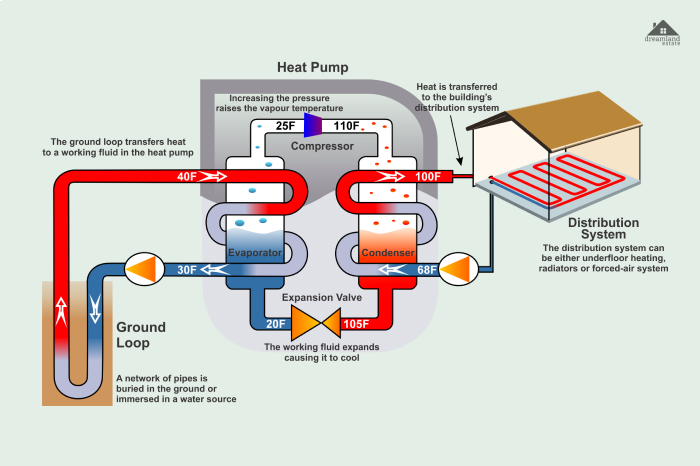
The geothermal heating system also uses air as a transmitter for heat. For transmitting heat from one place to the other indoors, conventional duct-work is used. The ducts transmit cold or heated air to change the indoor’s temperature.
Recirculation

Once the heat is transferred indoors, the fluid returns to the pipe loops to collect heat. The process is repeated to benefit the user from time to time.
Where To Use Geothermal Heat Pumps?
Geothermal heat pumps are good for geothermal heating and more. They can be used for more than just heating your rooms. Here are some spaces where you use the geothermal heating system.
- Geothermal heating systems can help both small and larger-sized spaces based on needs. It can help single homes, single businesses, and entire community facilities (like college or school campuses).
- The geothermal heat pumps are implemented as part of the new construction. It can also be added retroactively to existing buildings.
- Geothermal heating systems work in both urban and rural settings.
Advantages And Disadvantages Of Geothermal Heating Systems
There are both pros and cons to using any heating system. Geothermal heating also has some benefits and limitations.
Pros
- The geothermal heating source is more environmentally friendly.
- The core of the earth produces heat. The energy will last as long as the planet remains. So, it is renewable energy.
- Heating and cooling systems.
- It is a reliable heat source since the underground heat does not fluctuate.
Cons
- This heating system is location specific.
- During digging, gasses get emitted into the atmosphere.
- Geothermal energy has the risk of triggering earthquakes.
- The geothermal heating system comes with a high upfront cost.
Read More: Electric Baseboard Heaters: Everything You Need To Know
Bottom Line
Geothermal heating systems can be used in any location on the planet. Once the pipes are planted, the geothermal heat pump can work anyplace. However, you should also consider the cons before making it your go-to heating pump.
Read Also:


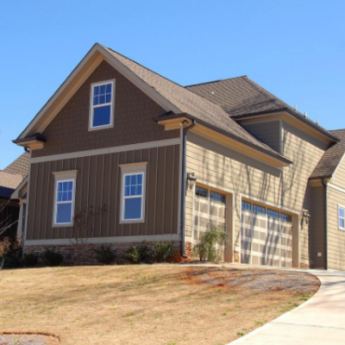








Leave A Reply